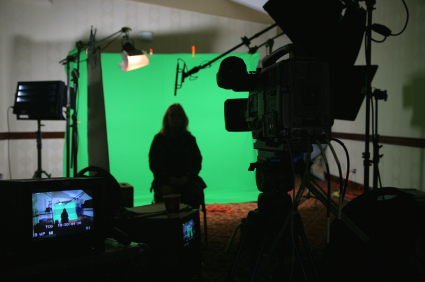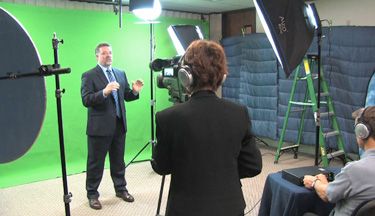 Testimonial video production starts long before the cameras start rolling. First, you need a willing client to appear in the customer testimonial video. Next, you need to plan the entire shoot from location to what the client will actually say during filming. At this point, you have two choices: letting the customer speak freely or scripting the words. Let’s take a look at these two options for client testimonials.
Testimonial video production starts long before the cameras start rolling. First, you need a willing client to appear in the customer testimonial video. Next, you need to plan the entire shoot from location to what the client will actually say during filming. At this point, you have two choices: letting the customer speak freely or scripting the words. Let’s take a look at these two options for client testimonials.
In either situation, you need happy customers willing to share their positive experiences on video. The problem with allowing customers to speak freely during testimonial video production is that customers aren’t always clear about what satisfied them. Where one customer might say, “They were great” and then draw a blank, another customer could ramble on for ten minutes detailing every aspect of the transaction. These two extremes illustrate why scripting client testimonials makes more sense.
While it’s tempting to simply let your happy customers speak their minds, the best client testimonials are scripted. Some business professionals balk at the thought of scripting a customer testimonial video. They may feel as though the scripted customer testimonial video is somehow dishonest. Scripting client testimonials doesn’t mean putting words into clients’ mouths. It’s a process that involves interviewing the customer, extracting the most satisfying parts of the user experience, and crafting a customer testimonial video script to match. When done properly, the words are authentic because they accurately reflect what the customer has previously said.
Testimonial Video Production – The Scripting Process
Scripting client testimonials is necessary because you have a short amount of time for customers on camera to make their point, and many customers aren’t exactly sure what their points are. In order to help customers communicate what they liked about a product or service, a skilled scriptwriter joins the testimonial video production team and carries out the following steps:
- Interview the customer – When it comes to scripting a customer testimonial video, scriptwriters must first interview the customer to uncover vital information about the customer’s experience. By asking the right questions, listening to the responses, and digging deeper, a skilled scriptwriter can quickly uncover hidden gems that the customer might not have freely discussed without prompting.
- Extract the most satisfying parts of the customer’s experience – After interviewing the customer, the scriptwriter reviews the interview transcript and extracts those magical moments.
- Write a concise customer testimonial video script – From there, the scriptwriter crafts a concise script that is as close to the customer’s own words as possible, highlighting those magical moments and making a point quickly.
Once the customer testimonial video script is written, it is given to the customer to review to ensure that it accurately reflects the customer’s experience and speaking style. Changes can be incorporated as needed. Finally, as testimonial video production continues, the client rehearses the lines for a natural delivery. Teleprompters or cue cards may be used to prompt the client.
In addition to writing and practicing the script, further testimonial video production work can be done to polish the customer testimonial video to perfection. For example, it’s not unusual for clients to stumble over words when giving client testimonials on video. Encourage your customers to keep speaking and not get flustered. After all, you can reshoot the testimonial as well as edit it afterward.
Scripting client testimonials requires a strong scriptwriter with excellent interviewing skills. With a concise, to-the-point script in place, your customers can express themselves better than ever without compromising their experience or integrity.
What do you think about scripting client testimonials? Share your thoughts in the comments section below:














 Website video production requires video production, marketing, and technical expertise, and there’s a lot to do. After all, you have to write a script, hire actors, scout locations, shoot the video, edit it, upload it, and optimize it – just to name a few of the many tasks involved. Use this Web video production checklist to ensure that you don’t overlook anything.
Website video production requires video production, marketing, and technical expertise, and there’s a lot to do. After all, you have to write a script, hire actors, scout locations, shoot the video, edit it, upload it, and optimize it – just to name a few of the many tasks involved. Use this Web video production checklist to ensure that you don’t overlook anything. While it may seem overwhelming to create a customer testimonial video at first, the process is much easier when you break it down. Like most forms of video production, testimonial video production consists of three major phases: pre-production, production, and post-production. Take a 1, 2, 3 approach to producing your client testimonials and you may be surprised to find out that the process isn’t nearly as difficult as you expected.
While it may seem overwhelming to create a customer testimonial video at first, the process is much easier when you break it down. Like most forms of video production, testimonial video production consists of three major phases: pre-production, production, and post-production. Take a 1, 2, 3 approach to producing your client testimonials and you may be surprised to find out that the process isn’t nearly as difficult as you expected.